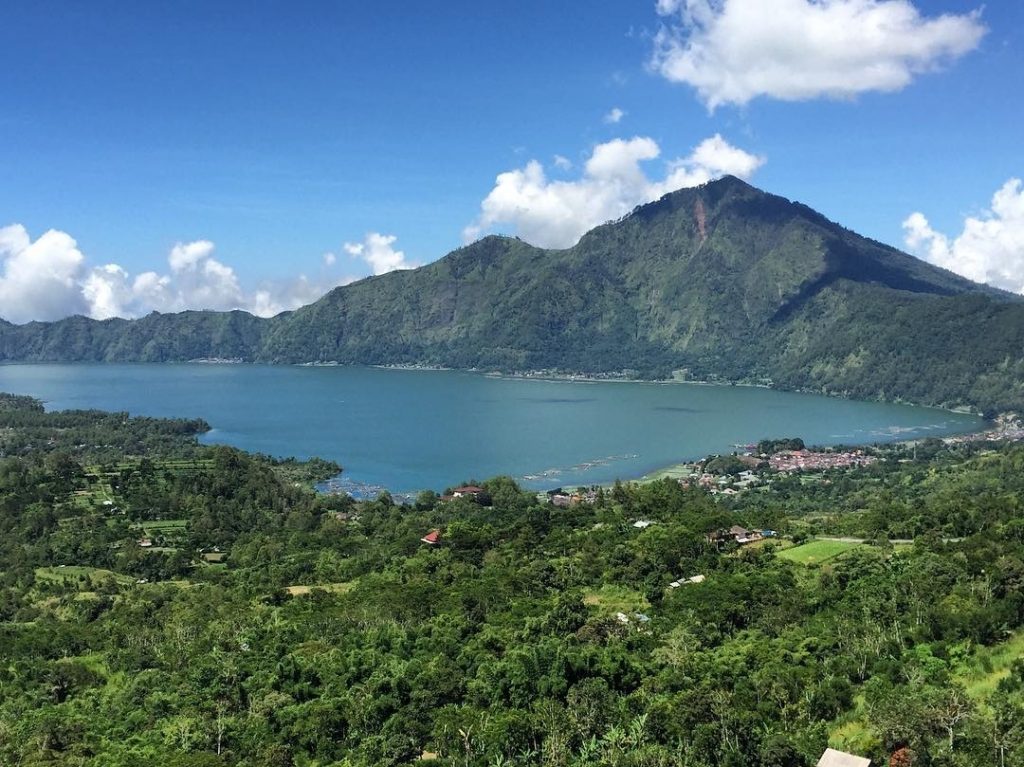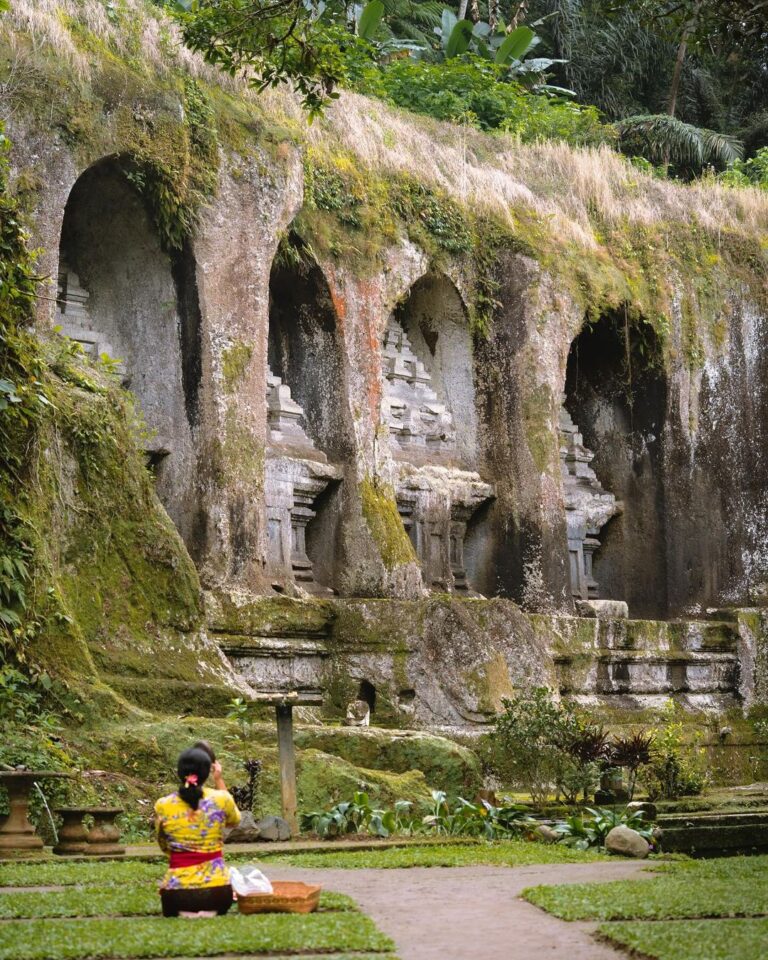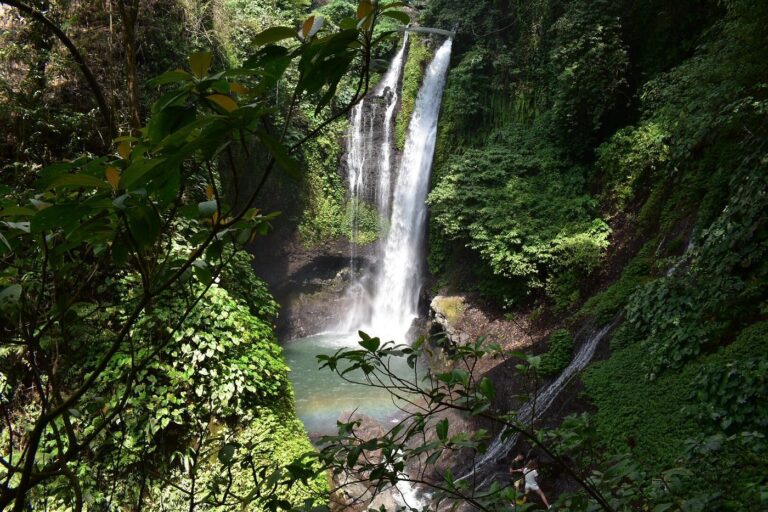Bali isn’t just about serene beaches and cultural wonders. For thrill-seekers, the island offers some of the most exhilarating extreme sports experiences, set against stunning landscapes.
From high cliffs and roaring waves to jungle treks and rapid rivers, here’s a deep dive into Bali’s top extreme sports and where you can find them.
1. Cliff Jumping at Mahana Point, Nusa Ceningan
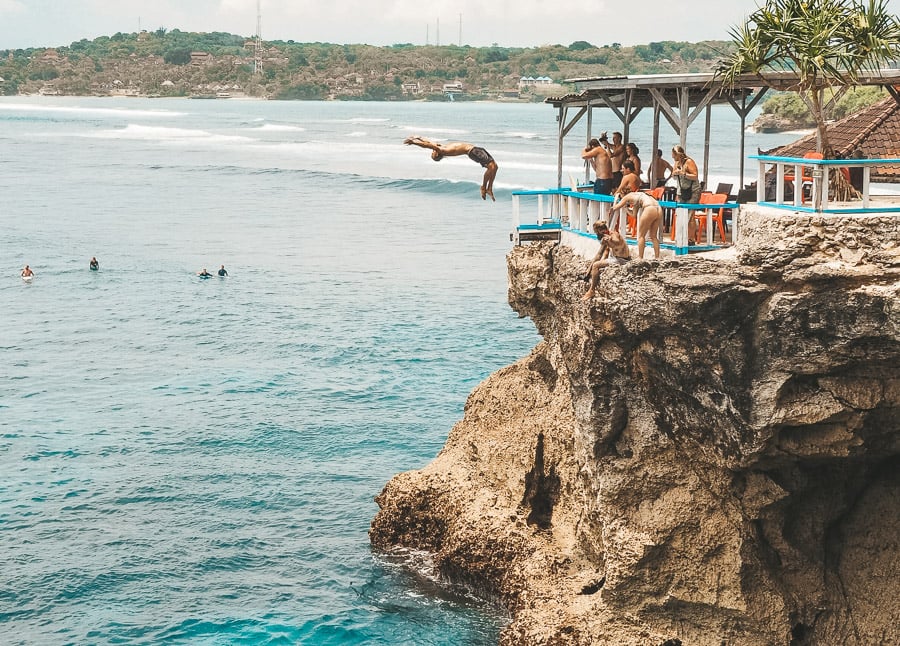
(Photo by Jackson Groves)
Mahana Point on Nusa Ceningan is a dream for adrenaline junkies who love cliff jumping. The main jump is about 10 meters (33 feet) high, with an option to jump from a lower ledge at 5 meters.
This isn’t just about the thrill—the crystal-clear waters below make it an unforgettable experience.
What makes Mahana Point even more exciting is the adjacent surf break, so you’ll often find surfers riding waves while you make your leap.
The area is well-equipped with a bar and restaurant overlooking the ocean, making it a great place to relax after your jumps.
The best time to visit is during high tide when the water level is at its safest for jumping. Be prepared for strong currents, and always check conditions before you go.
2. White Water Rafting on the Ayung and Telaga Waja Rivers
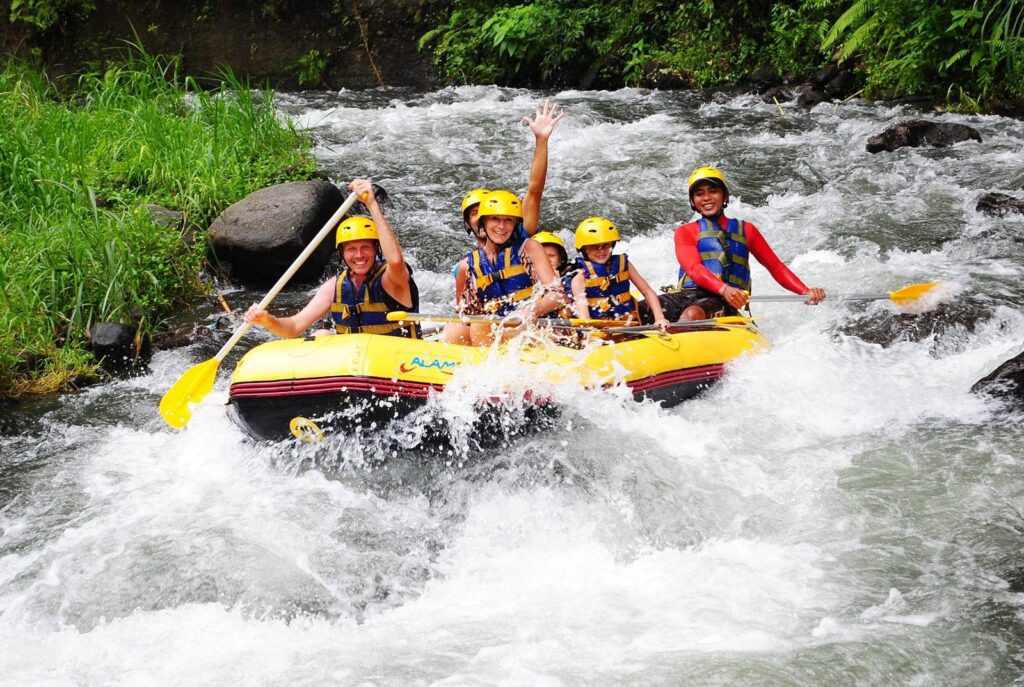
Bali’s white water rafting scene is dominated by two major rivers: Ayung River near Ubud and Telaga Waja River in East Bali. Each offers a unique challenge.
- Ayung River: Ideal for beginners and intermediate rafters, Ayung River has rapids classified between Class II and III. The lush jungle scenery, towering waterfalls, and occasional sightings of exotic birds make the journey even more enjoyable. Some sections even have beautiful stone carvings along the riverbanks, adding a cultural touch to the adventure.
- Telaga Waja River: For a more intense ride, Telaga Waja River is the best choice. With rapids ranging from Class III to IV, this river guarantees an adrenaline-packed adventure. Expect sudden drops, narrow passages, and strong currents. One of the highlights is a thrilling 4-meter waterfall drop near the end of the course. The Telaga Waja route also offers breathtaking views of rice terraces and Mount Agung in the background.
Both rivers operate year-round, but the rainy season (November to March) makes the rapids even more exciting.
3. Surfing at Uluwatu and Keramas Beach

(Photo by Danny Bastiaanse)
Bali is one of the world’s top surfing destinations, and two locations stand out for extreme wave-riding experiences: Uluwatu and Keramas Beach.
- Uluwatu: Known for its legendary left-hand reef break, Uluwatu is a must-visit for advanced surfers. The waves here can get as big as 10 feet, especially during the dry season (April to October). The surf break is located beneath a cliff, home to the famous Uluwatu Temple, creating a breathtaking backdrop. It’s important to note that Uluwatu’s waves can be unforgiving—sharp reef bottoms and powerful currents make it unsuitable for beginners.
- Keramas Beach: Unlike Uluwatu, Keramas Beach on Bali’s east coast offers a fast and powerful right-hand wave, perfect for those who love barrel rides. This spot has gained fame for hosting international surf competitions. Thanks to its black sand beach and fewer crowds compared to Uluwatu, it’s an excellent spot for surfers looking for high-performance waves without the intense competition for space.

(Photo by Danny Bastiaanse)
- Medewi: Located on Bali’s west coast, Medewi is famous for having one of the longest left-hand waves in Indonesia. Unlike Uluwatu, the waves here are more forgiving, making it a great spot for both intermediate and advanced surfers. The smooth, rolling waves provide the perfect setup for long rides, ideal for those who enjoy classic, stylish surfing.
4. Paragliding at Nyang-Nyang Beach

(Photo by : Megane K)
If you’ve ever dreamed of soaring over Bali’s dramatic coastline, paragliding at Nyang-Nyang Beach is a must. This spot offers stunning views of the Indian Ocean and Uluwatu’s limestone cliffs.
Takeoff usually happens from the cliffside, allowing you to glide smoothly over turquoise waters. The experience depends on wind conditions, but the best time to paraglide is from May to September when the dry season provides steady winds.
Tandem paragliding is available for beginners, with experienced pilots guiding you safely through the skies. For those with prior experience, solo flights are allowed, making it an exciting challenge for skilled paragliders.
5. Dirt Biking in Tabanan and Mount Batur

(Photo by : Seek Sophie)
Bali’s rugged landscapes make it perfect for dirt biking. Two of the best locations for off-road adventures are Tabanan and the volcanic trails around Mount Batur.
- Tabanan: This area is famous for its rice terraces, but venture off the beaten path, and you’ll find challenging dirt tracks, river crossings, and dense jungles. Riders can navigate through traditional villages and jungle paths, experiencing Bali’s raw natural beauty.
- Mount Batur: Riding along the black lava fields of Mount Batur offers an otherworldly experience. The terrain consists of hardened lava from past eruptions, creating a rough but thrilling ride. Expect steep inclines, rocky surfaces, and sharp turns. The views of Batur Caldera and Lake Batur make it worth the challenge.
6. Free Diving in Amed and Tulamben
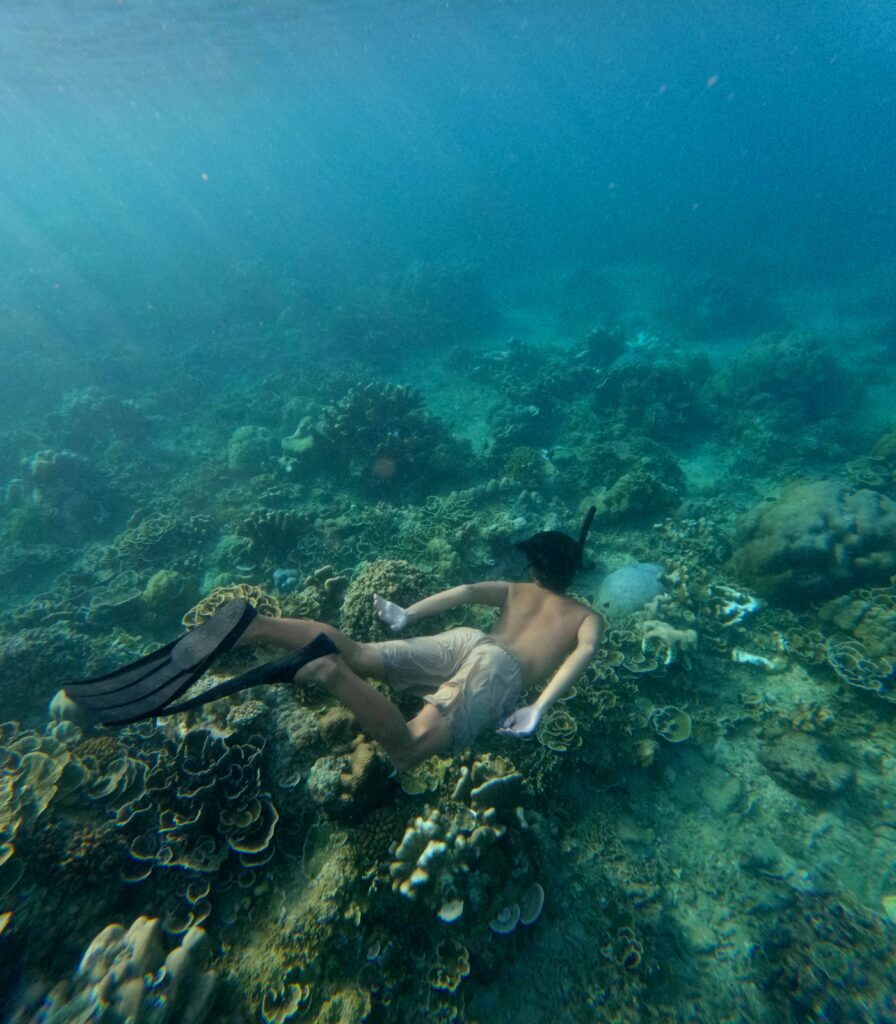
(Photo by : Justin Sabrinsky)
For those who love underwater adventures, freediving in Amed and Tulamben offers an incredible experience. These areas are known for their clear waters, coral reefs, and shipwrecks.
- Amed: This coastal village is a freediving hotspot due to its calm waters and diverse marine life. Beginners can train in shallow waters, while advanced divers can explore deeper spots up to 40 meters.
- Tulamben: The USS Liberty Shipwreck in Tulamben is one of Bali’s most famous dive sites. Freedivers can explore the wreck, which lies between 5 to 30 meters deep, making it accessible even for those with limited experience. The ship is covered in coral and teeming with marine life, including barracudas and reef sharks.

(Photo by : Don Silcock)
7. Canyoning in Gitgit and Sambangan

Bali’s waterfalls and gorges make it a prime location for canyoning. Gitgit and Sambangan in North Bali are the best places for this adventure.
- Gitgit: This area offers challenging canyoning routes, with vertical drops, natural slides, and deep pools for jumping. The most famous route is the Gitgit Twin Canyon, featuring rappelling sections down waterfalls as high as 25 meters.
- Sambangan: Known as the “Secret Garden,” Sambangan is home to multiple waterfalls and natural rock slides. It’s a great location for beginners and experienced canyoners alike.
8. Swing Ride at Canggu
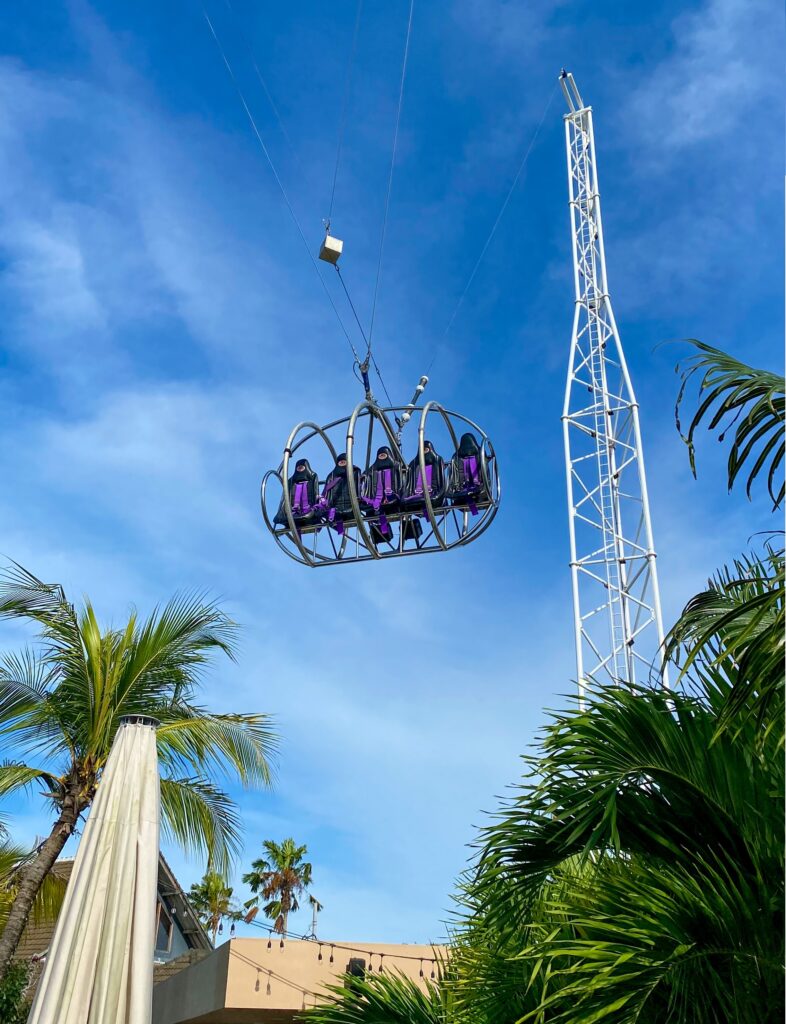
G Swing Bali is a spine-tingling extreme swing ride in Canggu! You and up to 4 friends are slowly lifted to 40 metres. As you’re being lifted, the orientation of your chairs is also shifting. By the time you reach the peak, swingers will be facing downward. Then, 1 person is responsible for hitting the release lever.
You’ll instantly drop, creating a freefall effect, before the cable alters your direction forward until you reach peak height on the other side of the towers. The initial drop is quite intense, but the rest of the swing is very relaxing, with beautiful views of the Canggu neighborhood of Bali.
9. Water Sports at Benoa
Benoa is Bali’s hub for water sports, offering jet skiing, flyboarding, and parasailing.
- Jet Skiing: Ride high-powered jet skis across the calm waters of Benoa Bay.
- Flyboarding: A water-propelled board lets you hover above the ocean.
- Parasailing: Get a bird’s-eye view of Bali’s coastline while being towed behind a speedboat.
10. Volcano Trekking on Mount Agung and Mount Batur
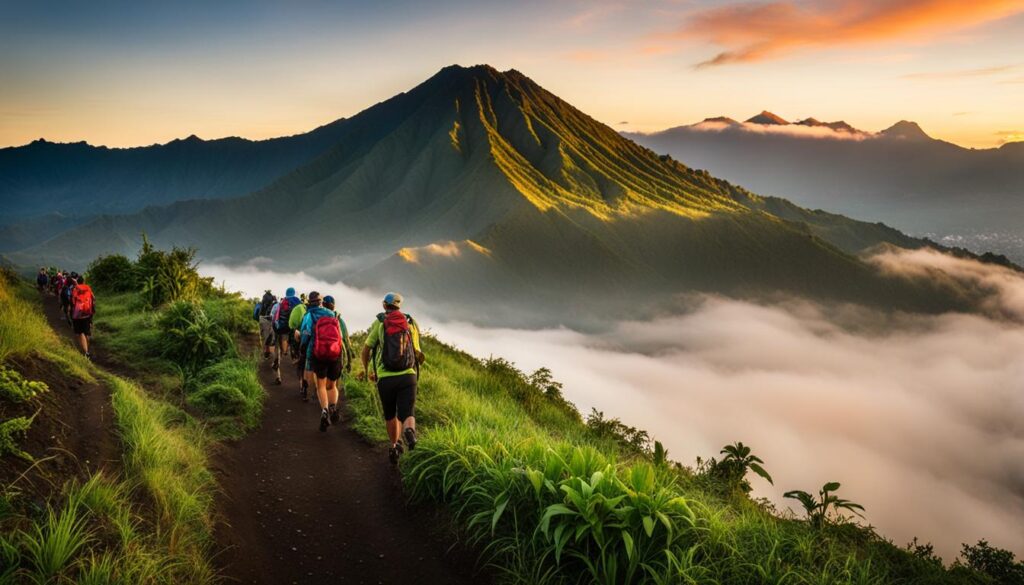
For those who prefer an extreme adventure on foot, trekking Bali’s towering volcanoes—Mount Agung and Mount Batur—offers an unforgettable challenge.
- Mount Agung: Bali’s highest and most sacred volcano, standing at 3,031 meters, is a tough climb meant for experienced hikers. The trek takes about 6-7 hours and begins in the dead of night to reach the summit by sunrise. The reward? A breathtaking panoramic view stretching across Bali and beyond, often with the clouds below you.
- Mount Batur: A less challenging but equally rewarding hike, Mount Batur (1,717 meters) is a popular trek for sunrise seekers. The ascent takes around 2 hours, and from the top, trekkers are treated to stunning views of Lake Batur and Mount Agung in the distance. It’s an active volcano, and you can even find steam vents near the summit.
Both treks offer an incredible way to experience Bali’s raw natural beauty while testing your endurance.
11. Skydiving in Kuta

(Photo by : theskydivebali)
For the ultimate extreme experience, skydiving over Kuta offers breathtaking aerial views of Bali. Tandem skydives allow beginners to experience freefall from 10,000 feet, with professional instructors ensuring safety. The descent provides stunning perspectives of Bali’s beaches, rice fields, and coastline.
Conclusion
Bali isn’t just an island for relaxation, it’s a paradise for extreme sports lovers. From skydiving over golden beaches to plunging into the ocean from towering cliffs, the island offers no shortage of heart-pounding experiences.
The combination of Bali’s rugged landscapes, powerful ocean swells, dense jungles, active volcanoes and untamed rivers create the perfect playground for adrenaline junkies.
What makes extreme sports in Bali even more special is the island’s unique blend of nature, adventure, and culture. Surfing in Uluwatu isn’t just about catching waves—it’s about riding world-class barrels beneath an ancient sea temple.

(Photo by : Alae Khaldi)
Trekking Mount Agung is more than just a physical challenge—it’s a spiritual journey up the most sacred mountain in Bali. Whether you’re dirt biking through remote villages, rafting down jungle-lined rivers, or free diving among sunken shipwrecks, every extreme adventure here is tied to the island’s deep cultural roots and stunning scenery.
Whether you’re an experienced adventurer or just looking to step out of your comfort zone, Bali’s extreme sports scene has something for everyone.
From the ocean to the sky, from jungle trails to volcanic peaks, the island promises experiences that will leave you breathless—sometimes literally. So, gear up, take the plunge, and discover the wilder side of Bali.
